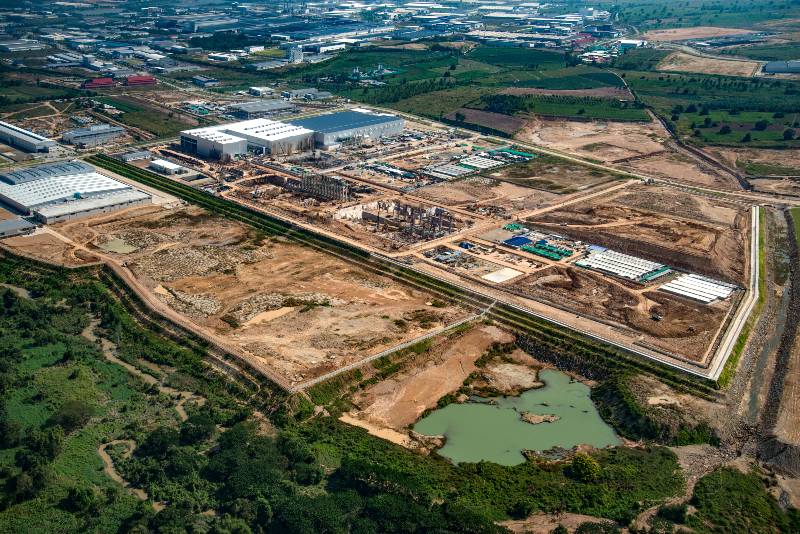In the fast-paced world of commercial real estate (CRE), tenant turnover can be a significant hurdle for property owners. Not only does it lead to lost revenue, but it also requires substantial time and resources to find new tenants. As a seasoned professional with over 18 years of experience in the industry, I’ve seen firsthand how flexible lease agreements can be a game-changer in reducing tenant turnover. By offering customizable lease terms and adapting to tenants’ changing needs, property owners can attract and retain high-quality tenants, ultimately leading to a more stable and profitable portfolio.
Key Takeaways
- Flexible lease terms and agreements offer a powerful strategy for reducing tenant turnover in commercial real estate (CRE).
- Adapting to tenants’ changing needs and offering customizable lease terms can attract and retain high-quality tenants.
- Implementing flexible lease agreements requires careful planning, effective communication, and the use of technology to streamline management processes.
Understanding Tenant Turnover in CRE
Tenant turnover is a common challenge faced by CRE property owners, and it can be triggered by various factors, such as:
- Changes in business needs
- Relocation
- Dissatisfaction with the property or management
- Inability to afford rent increases
The financial implications of tenant turnover can be significant, including:
- Lost rental income during vacancy periods
- Marketing and advertising costs to attract new tenants
- Property preparation expenses (cleaning, repairs, etc.)
- Leasing commissions and legal fees
Moreover, high turnover rates can take a toll on property management teams, leading to increased workload and stress. By understanding the root causes of tenant turnover and its far-reaching effects, CRE professionals can better appreciate the value of implementing strategies like flexible lease agreements to mitigate these challenges.
Benefits of Flexible Lease Agreements
Flexible lease agreements offer a multitude of benefits for both property owners and tenants in the CRE sector. By providing customizable lease terms and adapting to tenants’ evolving needs, flexible leases can:
- Attract high-quality tenants: Flexible lease options appeal to a broader range of potential tenants, including those who may not be ready for a long-term commitment or whose business needs are likely to change in the near future.
- Improve tenant satisfaction and loyalty: By demonstrating a willingness to accommodate tenants’ unique requirements, property owners can foster a positive landlord-tenant relationship, leading to increased satisfaction and a higher likelihood of lease renewals.
- Enhance the property’s competitive edge: In a crowded CRE market, offering flexible lease agreements can set a property apart from its competitors, making it more attractive to potential tenants and increasing occupancy rates.
- Reduce the financial burden of tenant turnover: By retaining tenants for longer periods and minimizing vacancy rates, flexible leases can help property owners avoid the costly expenses associated with frequent turnover, such as lost rental income, marketing costs, and property preparation fees.
- Adapt to market fluctuations: Flexible lease agreements allow property owners to respond more quickly to changes in market conditions, such as shifting demand or economic uncertainties, by adjusting lease terms as needed to maintain occupancy and profitability.
By recognizing the numerous advantages of flexible lease agreements, CRE professionals can make informed decisions about incorporating this strategy into their property management approach, ultimately leading to reduced tenant turnover and enhanced portfolio performance.
Key Metrics to Measure Flexible Lease Success
Tracking the right metrics is essential to evaluate the effectiveness of flexible lease agreements. Important measures include tenant retention rates, lease renewal frequency, average vacancy duration, and overall portfolio revenue growth. Monitoring these KPIs enables property owners to adjust lease terms and strategies proactively for maximum benefits.
Types of Flexible Lease Agreements
Flexible lease agreements come in various forms, each designed to cater to the specific needs of tenants and property owners in the CRE market. Some common types of flexible leases include:
- Month-to-month leases: These agreements allow tenants to rent a property on a monthly basis, providing maximum flexibility for those with short-term or uncertain business needs.
- Short-term leases: Typically lasting between 3 to 12 months, short-term leases offer a middle ground between month-to-month agreements and traditional long-term leases, allowing tenants to commit to a property for a limited time.
- Customizable lease terms: Flexible leases often include provisions that enable tenants to tailor their rental experience to their specific requirements, such as:
- Rent payment options: Tenants may be given the choice to pay rent monthly, bi-weekly, or even daily, depending on their cash flow and budgeting preferences.
- Security deposit alternatives: Property owners can offer alternatives to traditional security deposits, such as surety bonds or pay-as-you-go options, to reduce upfront costs for tenants.
- Amenity packages: Customizable amenity packages allow tenants to select the services and features that best suit their needs, such as parking, storage, or communal spaces.
- Rent-to-own agreements: These leases provide tenants with the opportunity to purchase the property at the end of the rental term, appealing to those who may want to test a location before committing to ownership.
- Graduated lease agreements: Also known as “step-up” leases, these agreements feature a pre-determined rent increase schedule, allowing tenants to plan for future expenses while providing property owners with a stable income stream.
- Percentage rent leases: Common in the retail sector, percentage rent leases require tenants to pay a base rent plus a percentage of their gross sales, aligning the interests of both parties and encouraging collaboration.

Today, as vacancy trends continue to fluctuate, flexible leases are gaining popularity among tenants and becoming a valuable negotiation tool for landlords seeking to fill their properties. Modified gross leases, in particular, offer a prime example of a lease structure with equity options, allowing both parties to share some of the property’s financial responsibilities. This arrangement can simplify critical tasks such as financial planning and building operations, making them more manageable for all involved.
By introducing lease structures like modified gross leases, property owners can attract a wider range of tenants and foster a sense of shared investment in the property’s success. This collaborative approach can lead to stronger landlord-tenant relationships, increased tenant satisfaction, and ultimately, lower turnover rates.
Implementing Flexible Lease Agreements
Implementing flexible lease agreements in a CRE portfolio requires careful planning and execution. To ensure a successful transition, property owners should:
- Assess the property’s suitability: Evaluate the property’s location, amenities, and target tenant demographics to determine which types of flexible leases are most appropriate.
- Develop a flexible lease strategy: Create a comprehensive plan that outlines the specific lease options to be offered, along with any associated policies and procedures.
- Communicate the benefits to potential tenants: Clearly articulate the advantages of flexible lease agreements in marketing materials and during property tours, emphasizing how these options can accommodate tenants’ unique needs.
- Streamline the lease signing process: Utilize digital lease signing and document management tools to simplify the leasing process for both tenants and property management staff.
- Train property management staff: Ensure that all team members are well-versed in the details of the flexible lease options available and can effectively communicate these options to potential tenants.
In addition to these steps, it’s essential to monitor the performance of flexible lease agreements over time, tracking metrics such as occupancy rates, tenant satisfaction, and turnover frequency. By regularly assessing the effectiveness of these leases and making data-driven adjustments as needed, CRE professionals can optimize their flexible leasing strategy for maximum results.
Legal Considerations for Flexible Lease Agreements
Before implementing flexible leases, property owners must review local zoning laws and leasing regulations. Ensuring compliance with tenant protection laws and lease disclosure requirements can prevent legal disputes. Additionally, clear contract drafting that outlines termination rights, rent adjustments, and renewal options helps build transparent landlord-tenant relationships.
Addressing Potential Challenges
While flexible lease agreements offer numerous benefits, they also come with certain challenges that CRE professionals must be prepared to address, such as:
- Increased administrative tasks: Managing a variety of lease types and terms can lead to a higher volume of paperwork and administrative responsibilities for property management teams.
- Balancing flexibility with stability: Property owners must strike a delicate balance between offering flexibility to tenants and maintaining a stable, predictable income stream.
- Mitigating risks associated with shorter lease terms: Shorter lease durations may expose property owners to a higher risk of vacancy and turnover, requiring proactive strategies to minimize these risks.
To overcome these challenges, CRE professionals can leverage technology solutions, such as property management software and automated billing systems, to streamline administrative tasks. Additionally, implementing a diverse mix of lease types and regularly monitoring market conditions can help maintain a balance between flexibility and stability.
Market Trends Driving Demand for Flexible Leases
The rise of remote work, startup growth, and shifting business models are fueling demand for flexible leasing options in commercial real estate. Tenants increasingly seek short-term, customizable leases to adapt to uncertain market conditions and operational changes, making flexible leases a critical competitive advantage for landlords.
Technology and Flexible Lease Agreements
Technology plays a crucial role in the successful implementation and management of flexible lease agreements in the CRE sector. By leveraging various digital tools, property owners can:
- Utilize property management software: These platforms can help automate and streamline tasks such as lease tracking, rent collection, and maintenance requests, making it easier to manage a diverse portfolio of lease types.
- Leverage online platforms for marketing and tenant communication: Digital marketing channels and tenant portals can facilitate effective communication and engagement with current and prospective tenants, allowing for seamless sharing of information about flexible lease options.
- Implement digital lease signing and payment solutions: Electronic signature tools and online payment platforms can simplify the leasing process for both tenants and property management staff, reducing paperwork and minimizing the risk of errors.
Best Practices for Managing Flexible Lease Agreements
To maximize the benefits of flexible lease agreements and minimize potential challenges, CRE professionals should adhere to the following best practices:
- Regularly review and update lease terms: Continuously assess the effectiveness of current lease options and make adjustments as needed based on market conditions, tenant feedback, and property performance.
- Maintain open communication with tenants: Foster a positive landlord-tenant relationship by regularly engaging with tenants, promptly addressing their concerns, and proactively seeking feedback on their leasing experience.
- Monitor market trends and competitor offerings: Stay informed about the latest leasing trends and competitor strategies in the local CRE market to ensure that your flexible lease options remain competitive and attractive to potential tenants.
- Continuously evaluate the success of flexible lease programs: Track key performance indicators, such as occupancy rates, tenant retention, and revenue growth, to assess the effectiveness of your flexible leasing strategy and identify areas for improvement.

Case Studies
To illustrate the real-world impact of flexible lease agreements in the CRE sector, let’s explore a few success stories:
- Retail property revitalization: A struggling shopping center in a suburban area implemented a mix of short-term and percentage rent leases to attract new tenants. By offering flexibility and aligning the interests of both parties, the property owner was able to fill vacant spaces with a diverse mix of local and national retailers, ultimately increasing occupancy rates and revenue.
- Office space adaptation: An office building owner faced high vacancy rates due to shifting work patterns and increased remote work. By introducing flexible lease options, such as month-to-month and customizable lease terms, the owner was able to attract a range of tenants, from startups to established businesses seeking satellite offices. The result was a significant reduction in vacancy rates and a more stable tenant base.
- Industrial property transformation: An industrial property owner struggled to retain tenants due to the evolving needs of modern manufacturing and logistics companies. By offering graduated lease agreements and tailored amenity packages, the owner was able to accommodate tenants’ growth and changing requirements, leading to higher retention rates and a more profitable portfolio.
These case studies demonstrate the tangible benefits of implementing flexible lease agreements in various CRE sectors. By learning from these success stories and adapting their strategies to fit their unique properties and market conditions, CRE professionals can leverage the power of flexible leases to reduce tenant turnover and drive long-term portfolio growth.
Ways To Build Flexibility Into Your Commercial Real Estate Lease
Flexible Exit
When it comes to building flexibility into your commercial lease, one of the most important things to consider is a solid termination clause. According to Jonathan Keyser, the founder of Keyser, one of the largest occupier services commercial real estate brokerage firms in the nation, this is something that every business should have, but it’s absolutely crucial for new businesses, startups, tech companies, or any organization that’s experiencing rapid growth or change.
Picture this: your business is evolving, and suddenly, the space you’re in just doesn’t fit your needs anymore. That’s where a termination clause comes in handy. It gives you peace of mind knowing that you can exit the lease if necessary. But here’s the thing – as Keyser points out in his Forbes article, termination clauses aren’t always included in lease agreements by default. That’s why it’s so important to make it a priority during the negotiation process.
Now, you might be wondering: “What’s the catch?” Keyser notes that termination clauses usually have some limitations. For example, you might have to pay back a portion of the tenant improvement fees, give a certain amount of notice before terminating, or stay in the space for a minimum period. But despite these limitations, Keyser emphasizes that having a termination clause is still a game-changer when it comes to building flexibility into your lease.
Flexible Space
While having a termination clause is crucial for downside protection, it’s equally important to consider your potential growth and negotiate expansion rights into your lease. As Keyser explains in his Forbes article, this upside flexibility ensures that you have options if your business outgrows its current space.
Imagine this scenario: you initially leased 10,000 square feet of office space, but two years later, your team has doubled in size, and you urgently need more room. Without expansion rights, you might be stuck in a space that no longer suits your needs. However, by negotiating these rights from the start, you can secure the ability to lease additional space as your business flourishes. This could mean expanding into a neighboring suite or even relocating to a larger space within the same building.
Keyser emphasizes that having the flexibility to accommodate growth is essential for any thriving business. By planning ahead and including expansion rights in your lease, you can avoid the headaches and costs associated with finding a new space when you’ve outgrown your current one.
Flexible Term
Another key aspect of building flexibility into your commercial lease is negotiating a variety of short-term renewal options. As Keyser points out, if your current space isn’t your forever home, committing to a long-term lease may not be the best choice.
Instead, consider negotiating short-term renewals that give you the time and flexibility to find the perfect space for your evolving needs. This approach can also help you avoid falling into “holdover” status, which can be incredibly costly – up to four times more than your negotiated rate, according to Keyser.
By having short-term renewal options in place, you can buy yourself the time necessary to make informed decisions about your company’s future space requirements without breaking the bank.
Flexible Rent Structure
In addition to the points mentioned by Keyser, another important consideration is negotiating a flexible rent structure. This could include options such as rent abatement periods, where you have a set amount of time with reduced or no rent payments, allowing you to allocate those funds toward other business expenses.
Another option is a graduated rent structure, where your rent payments start low and gradually increase over time. This can be particularly beneficial for startups or businesses that anticipate significant growth in the coming years, as it allows them to manage their cash flow more effectively.
Keyser’s insights highlight the importance of building flexibility into your commercial lease. By prioritizing termination clauses, expansion rights, short-term renewals, and flexible rent structures, you can create a lease agreement that not only meets your current needs but also adapts to the changing requirements of your business. This proactive approach can save you significant time, money, and stress in the long run, allowing you to focus on what matters most – growing your business.
FAQs
What are the pros and cons of flexible leasing options for commercial real estate?
Flexible leases offer tenants and landlords the ability to negotiate a lease that works for both parties. However, they may come with higher rent and the lease gives tenants the ability to terminate the lease quickly.
How does a month-to-month lease differ from a long-term lease in commercial real estate?
A month-to-month lease allows for greater flexibility as it can be terminated with short notice, while a long-term lease provides stability and often lower rental rates.
What are the key elements of a commercial lease agreement?
A commercial lease agreement typically includes details such as base rent, lease term, renewal options, and terms for termination.
Can tenants sublease their commercial space with a flexible lease?
Yes, many flexible lease agreements allow tenants to sublease their space to another party with the landlord’s approval.
What is the significance of base rent plus government payments in a commercial lease?
A: Base rent plus government payments refers to the total amount that a tenant is required to pay, which may include additional costs like utilities or taxes mandated by the government.
Conclusion
Flexible lease agreements offer a powerful solution for CRE professionals seeking to reduce tenant turnover and optimize portfolio performance. By providing customizable lease terms and adapting to tenants’ changing needs, property owners can attract and retain high-quality tenants, leading to higher occupancy rates, increased revenue, and a more stable tenant base.
However, successfully implementing flexible lease agreements requires careful planning, effective communication, and the strategic use of technology. By staying informed about market trends, continuously evaluating the success of their leasing strategies, and adhering to best practices, CRE professionals can maximize the benefits of flexible leases and position their portfolios for long-term success.
As a seasoned CRE professional with over 18 years of experience, I encourage property owners and managers to embrace the power of flexible lease agreements and explore how this strategy can help them achieve their goals in today’s dynamic market. By taking proactive steps to reduce tenant turnover and adapt to evolving tenant needs, CRE professionals can unlock new opportunities for growth and success in the years to come.
Schedule a consultation with me today to learn more about the power of flexible lease agreements and take the first step towards a more stable, profitable future for your commercial real estate investments.




